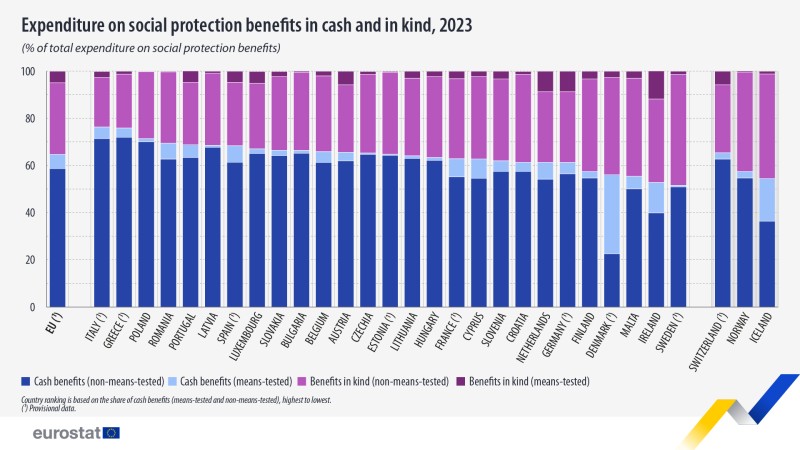⬤ The European Union spent €4.607 trillion on social protection benefits in 2023, according to fresh data from Eurostat. The spending includes both cash payments and in-kind support distributed across member states, covering essential areas like healthcare, family assistance, unemployment benefits and housing support. The figures show how different EU and EFTA countries structure their welfare spending.

⬤ Cash benefits remain the dominant form of social support across most of Europe. Italy leads with 76.4% of its social protection budget going to cash payments, while Greece follows closely at 75.9%. Poland, Romania, Portugal and Latvia also dedicate over two-thirds of their welfare budgets to direct cash transfers. This pattern reflects traditional welfare models built around direct income support for citizens.
⬤ Sweden and Ireland stand out with a different approach, showing the highest shares of in-kind benefits at 48.4% and 47.3% respectively. Instead of cash payments, these countries focus more on delivering public services directly—things like healthcare, social care and housing assistance. Denmark, Finland and the Netherlands follow a similar model with substantial in-kind programs. The data also reveals differences between means-tested and universal programs, showing how countries target their social support differently.
⬤ These spending patterns matter because they reflect each country's policy priorities, demographic realities and welfare philosophies. Whether a nation leans toward cash payments or public services affects everything from social outcomes to budget planning and how well support systems handle crises. The 2023 figures provide a clear picture of how EU countries are adjusting their social protection systems while facing economic pressures and changing social needs.
 Artem Voloskovets
Artem Voloskovets

 Artem Voloskovets
Artem Voloskovets


